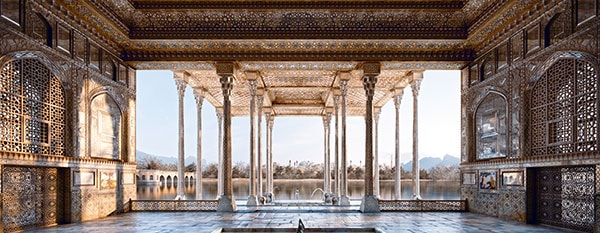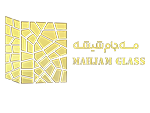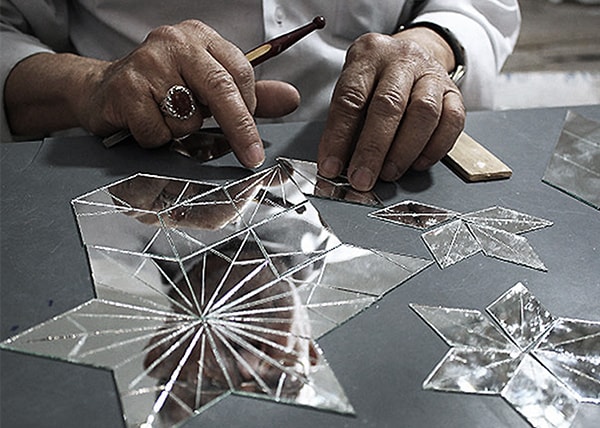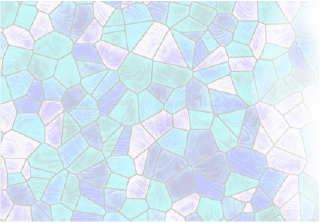ترجمه این پست به زبان های دیگر نیز روی سایت هست:
 English
English  Persian
Persian
Mirror in the art of Iranian architecture
Using mirror in the art of Iranian architecture should be the latest initiative of Iranian artists in fine arts that Iranians have used it in interior architecture and interior decoration. and The performers of this branch of art have always been Iranian artists since the time of its creation.This Art needs a lot of precision, elegance and patience.
The mirror creates sparkling place by regular geometric designs of small and large mirrors on the interior surfaces of Building that it is the result of a consecutive reflection of light in innumerable mirror pieces and it create a bright pleasing dreamy place.
The genesis of mirror in the art of Iranian architecture
Historical documents show that utilization of the mirror decoration for the first time was started in the capital of king Tahmasb Safavi in the city of Qazvin and in the home of Justice which he completed in year 1558 .
After the transfer of the capital city from Qazvin to Isfahan in 1599, the mirror decoration spread in the palace of Ashraf (Behshahr city).
In the decorations of the many royal palaces of Isfahan, which was more than 137, the mirror was used. Among them, the palace known as the Mirror House, which was renowned for use a lot of mirrors in it. It was very beautiful.
The reflectings of the image of Zayandeh Rood river and groves of northern beach in the mirrors of this building, create a nice view.

Restored image of the Mirror palace of Isfahan
They also have used mirror in the Chehel Soton palace which has built between 1643 and 1668 in the kingdom of Shah Abbas II.
In this palace, long mirrors, small pieces of mirror and colored glass are used to decorate the ceiling, porch and hall and all of the 18 columns of the porch was also decorated with colored glass and mirrors.
Gemelli Careri was an Italian traveler who wrote his travelogue in year 1696 in the era of Shah Suleiman Safavi.
He describes his visit to Mirza Tahir Palace, the ruler of Azerbaijan:((There is a beautiful mirror room in one of the interior yards that not only the walls, even heater stove is decorated with brilliant pieces of mirror and it creates a stunning view during light exposure.
It is clear that this round world has seen such an array of architecture for the first time and is surprised to see it.
The mirror in the art of Iranian architecture after the Safavid dynasty.
The first construction of the mirror happened after this denasty named Kareem Khan Zand Court in Shiraz, which destroyed Under the command of Agha Mohammad khan Qajar at 1795, and the engraved columns and seal doors and large mirrors were carried to the Tehran Darol-Emare Porch for the development and rebuilding.
Using the mirror continued and develop and evolved gradually in Lunar 1300s.
During this century, works of beauty such as halls and rooms of Shams al-Amareh, Hall of Mirror, Golestan Palace (1882 ) were built in Tehran. also the porch and shrine of Hazrat Abdul Azim in Shahr-e-Rey and Dar Al-Sayyade Astane Ghods Razavi (1883) where built and belong to this period.
In this long period of time, except the porch of Hazrat Mas’umeh (1886) in Qum, we do not know
any other proper work, but the first experiences after the evolution and development are significant.
Mirror in the art of Iranian architecture
since then, Using the mirror went beyond from religious range and royal palaces
and was widely used in public places such as hotels and restaurants, shops and banks and houses.
This extension was not ineffective in the traditional way of using mirror. And it caused new innovations in this art.
Printed in the weekly letter of Building No. 325
.
.
Mahjam Glass is a manufacturer of various mirror models.
You can decorate your house like a palace.





Wonderful post but I was wanting to know if you could write a litte more on this topic?
I’d be very thankful if you could elaborate a little bit further.
Many thanks!